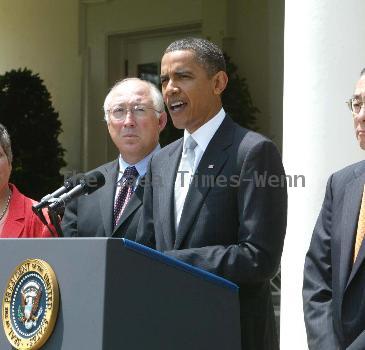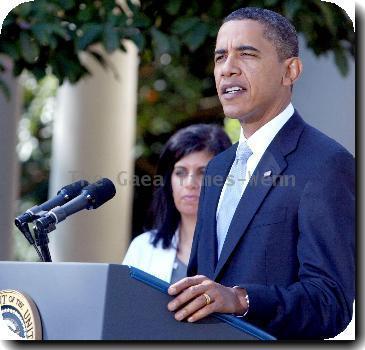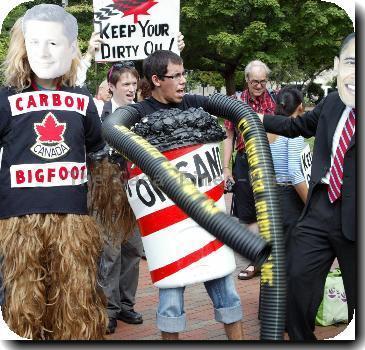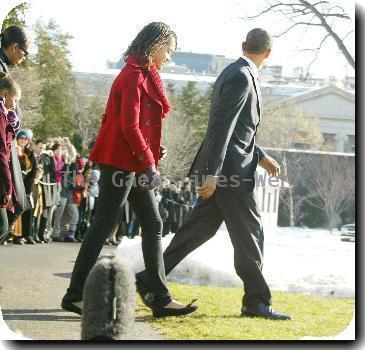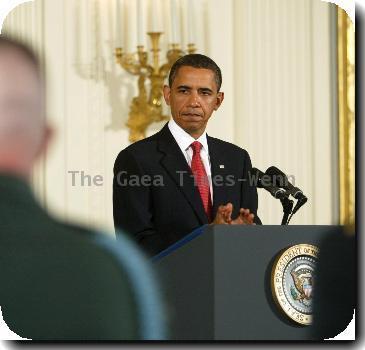Frustration, anger mount as gooey oil seeps into Gulf of Mexico wetlands and leak continues
By Greg Bluestein, APSaturday, May 22, 2010
Frustration mounts as oil seeps into Gulf wetlands
ROBERT, La. — Anger grew along the Gulf Coast as an ooze of oil washed into delicate coastal wetlands in Lousiana, with many wondering how to clean up the monthlong mess — especially now that BP’s latest try to plug the blown-out well won’t happen until at least Tuesday.
“It’s difficult to clean up when you haven’t stopped the source,” said Chris Roberts, a councilman for Jefferson Parish, which stretches from the New Orleans metropolitan area to the coast. “You can scrape it off the beach but it’s coming right back.”
Roberts surveyed the oil that forced officials to close a public beach on Grand Isle, south of New Orleans, as globs of crude that resembled melted chocolate washed up. Others questioned why BP PLC was still in charge of the response.
“The government should have stepped in and not just taken BP’s word,” declared Wayne Stone of Marathon, Fla., an avid diver who worries about the spill’s effect on the ecosystem.
The government is overseeing the cleanup and response, but the official responsible for the oversight said he understands the discontent.
“If anybody is frustrated with this response, I would tell them their symptoms are normal, because I’m frustrated, too,” said Coast Guard Commandant Thad Allen. “Nobody likes to have a feeling that you can’t do something about a very big problem.”
As simple as it may seem, the law prevents the government from just taking over, Allen said. After the 1989 Exxon Valdez spill in Alaska, Congress dictated that oil companies be responsible for dealing with major accidents — including paying for all cleanup — with oversight by federal agencies.
BP, which is in charge of the cleanup, said it will be at least Tuesday before engineers can shoot mud into the blown-out well at the bottom of the Gulf, yet another delay in the effort to stop the oil.
A so-called “top kill” has been tried on land but never 5,000 feet underwater, so scientists and engineers have spent the past week preparing and taking measurements to make sure it will stop the oil that has been spewing into the sea for a month. They originally hoped to try it as early as this weekend.
BP spokesman Tom Mueller said there was no snag in the preparations, but that the company must get equipment in place and finish tests before the procedure can begin.
“It’s taking time to get everything set up,” he said. “They’re taking their time. It’s never been done before. We’ve got to make sure everything is right.”
Crews will shoot heavy mud into a crippled piece of equipment atop the well, which started spewing after the drilling rig Deepwater Horizon exploded April 20 off the coast of Louisiana, killing 11 workers. Then engineers will direct cement at the well to permanently stop the oil.
BP, which was leasing the rig and is responsible for the cleanup, has tried and failed several times to halt the oil.
Chief Operating Officer Doug Suttles said Friday that a mile-long tube inserted into the leaking pipe is sucking about 92,400 gallons of oil a day to the surface, a figure much lower than the 210,000 gallons a day the company said the tube was sucking up Thursday. Suttles said the higher number is the most the tube has been sucking up at any one time, while the lower number is the average.
Crews have been using oil-soaking booms to corral the spill, and BP said Saturday that booms made of hair would not be used because they don’t absorb enough oil and sink too quickly.
The company has conceded that more oil is leaking than its initial estimate of 210,000 gallons a day total, and a government team is working to get a handle on exactly how much is flowing. Even under the most conservative estimate, about 6 million gallons have leaked so far, more than half the amount spilled by the Exxon Valdez.
On Saturday, the blossoming investigation into the spill progressed when President Barack Obama announced that former Florida Sen. Bob Graham and former EPA Administrator William K. Reilly will lead a presidential commission probing the spill.
Graham, a Democrat, is a former Florida governor and senator. Reilly ran the Environmental Protection Agency under Republican President George H.W. Bush. His tenure at the agency included the 1989 Exxon Valdez oil spill in Alaska. Obama intends to name five others to the panel.
Meanwhile, frustrated local and state officials were also waiting for the Army Corps of Engineers to issue permits so they can build sand berms in front of islands and wetlands to act as buffers between the advancing oil and the wetlands.
In a statement, corps spokesman Ken Holder said officials understand the urgency, but possible environmental effects must be evaluated before even an emergency permit can be issued.
Coast Guard Rear Adm. Mary Landry also took BP to task for not responding aggressively enough to oil coming ashore in Terrebonne Parish, La., to the west of the mouth of the Mississippi River.
Public interest in the spill is high — after lawmakers pressed BP for a live video feed of the leak this week, so many people tried to view it that they crashed the government Web site where it was posted.
BP executives say the only guaranteed solution to stop the leak is a pair of relief wells crews have already started drilling, but the work will not be complete for at least two months.
That makes the stakes even higher for the top kill.
Scientists say there is a chance a misfire could lead to new problems. Ed Overton, a Louisiana State University professor of environmental studies, said the crippled piece of equipment called a blowout preventer could spring a new leak that could spew untold gallons of oil if there’s a weak spot that is vulnerable to pressure from the heavy mud.
BP is also developing several other plans in case the top kill doesn’t work, including an effort to shoot knotted rope, pieces of tire and other material — known as a junk shot — to plug the blowout preventer, which was meant to shut off the oil in case of an accident but did not work.
Associated Press writers Matthew Daly in Washington and Kevin McGill in New Orleans contributed to this report.
Online:
globalwarming.house.gov/spillcam
Tags: Accidents, Barack Obama, Coastlines And Beaches, Energy, Environmental Concerns, Florida, Louisiana, New Orleans, North America, Robert, United States, Wetlands
